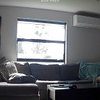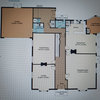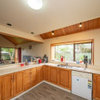What Are The Existing Drywall Types?
Since its invention in the last century, gypsum panels for construction have developed and improved, to standardize sizes, streamline production, reduce costs and introduce new variants to the market. Here are the types and their uses when repairing drywall.

Traditional
Regular Drywall or White Board. It is the most widely used, which can be found for sale in presentations from 3 to 8 to one inch wide. The usual length is between 2.4 and 3 meters, but they can also be found up to 4.9 meters. Its edges can be beveled, in case of working the joints with tape and patch, or straight, in case of applying a plaster finish ordrywall repairs
Moisture resistant

Green Board Drywall. It uses a green cover that makes it resistant to moisture. It is relatively more expensive than the traditional one and is used in the construction of bathrooms, kitchens, and walls for laundry rooms, where steam and humidity are usually present. It constantly produces the confusion of being waterproof; It should not be used in places where it will be in constant contact with it.
Blue Board Drywall. Another type of moisture-resistant Drywall. It is commonly used for projects where a layer of plaster is applied on top. It has a high resistance to water and mildew, as well as having absorbent properties. For use in bathrooms and places with high humidity, as well as helping to reduce noise.
Paperless Drywall. This type uses fiberglass instead of paper to protect the center cast. It has high resistance to humidity, fungus, and mold. Despite its high resistance, drywall panels should not be used in places with direct exposure to water.
Purple Drywall. Made for sites where there is direct contact with water. It offers the same advantages as regular Drywall, in addition to offering resistance against mold and moisture.
Cement Board. Another popular option for places where there is contact with water, such as bathroom and shower areas. It is a stable base for mounting ceramic tiles, which is reinforced with fibers to make them more firm.
Fire resistant

Drywall Type X. Also known as fire-resistant Drywall, it is made up of a gypsum core, reinforced with special non-combustible fibers. Its most common thickness is 5/8 inch and it has a one-hour fire retardant rating.
Type C Drywall. This panel offers a 2-4 hour fire retardant rating. It comes in presentations from 1/2 to 5/8 inch thick. Unlike Type X, it uses a higher amount of fiberglass and its gypsum core contains vermiculite for shrinkage compensation.
Environmentally friendly
Enviroboard. It consists of compressed fiber layers, made of ecologically safe materials. They are usually made from discarded fibers from newspapers and agricultural materials.
Eco rock. For its manufacture, this panel takes advantage of waste derived from industrial processes, such as slag, furnace dust, and fly ash. These elements are mixed with a filling supplement and water, thereby generating a paste. The great advantage of this product is its resistance to mildew and termites.
Noise proof

Soundproof Drywall. Made of laminated Drywall, with alternating layers of plaster and others such as ceramics, metal, plastic polymers, and glue. This type of panel is denser and more rigid than the traditional one, which helps reduce the propagation of vibrations. Recommended for use in places where noise is a problem, be it family rooms or for music for best result let a professional and skilled property service carpenters do the job.
As we can see, the decades of research and development behind Drywall technology have produced categories and variations that adapt to multiple scenarios. With this starting point, you will be able to make a better decision when selecting the type of Drywall panels for your projects.
If you need more information about how the Drywall Installation can facilitate your projects,you can enter our site and an expert will assist you.



Related Discussions
1940's NZ kitchen - small, awkward-ish layout.
Q
Not sure where to start!
Q
NZs top building franchise stuffed up our cladding - new ideas please!
Q
Incomplete House Consents
Q